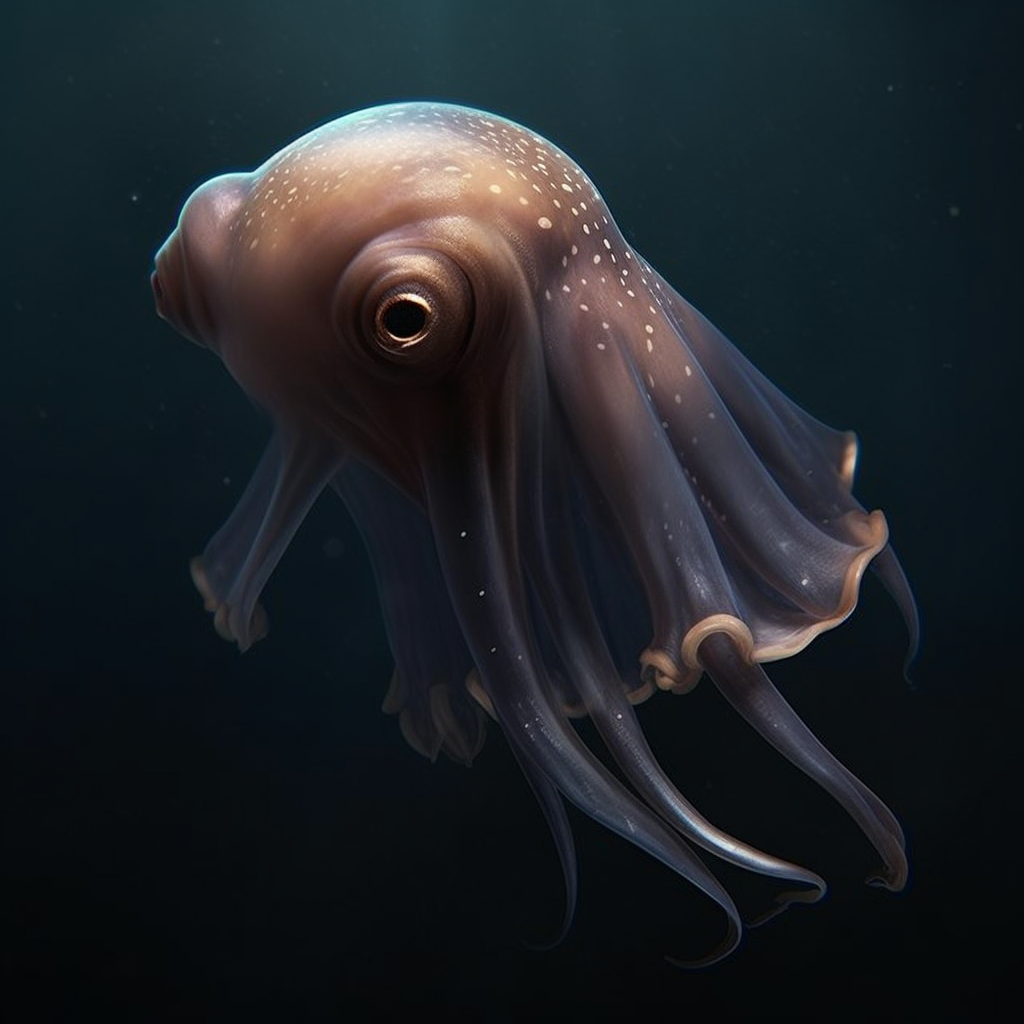The Mysterious Dumbo Octopus: Graceful Giants of the Deep
Exploring the Enigmatic Depths of the Ocean
The ocean, with its vast expanse and unfathomable depths, continues to be a source of fascination for scientists and enthusiasts alike. One of the most enigmatic creatures dwelling in the profound darkness is the Dumbo Octopus. Named after the famous Disney character, this remarkable cephalopod exhibits grace and beauty in its underwater ballet. In this article, we delve into the mysterious world of the Dumbo Octopus, exploring its unique features, habitat, and the intriguing behaviors that make it a true marvel of the deep.
An Introduction to the Dumbo Octopus
Imagine a creature that seems to dance through the ocean depths, its large ear-like fins resembling the ears of the beloved flying elephant, Dumbo. The Dumbo Octopus, belonging to the genus Grimpoteuthis, is a group of deep-sea umbrella octopuses. These remarkable cephalopods are part of the larger umbrella octopus family, Opisthoteuthidae. Unlike their shallow-water relatives, Dumbo Octopuses have adapted to survive in the extreme conditions of the deep sea.
Physical Characteristics and Adaptations
Dumbo Octopuses are characterized by their distinctive ear-like fins, which give them their name. These fins, located on either side of their mantle, resemble the floppy ears of the iconic Disney character. The fins serve a crucial purpose, allowing the octopus to gracefully navigate the ocean currents and control its movements in the deep waters. The soft, gelatinous body of the Dumbo Octopus lacks the rigid structure of other octopuses, enabling it to squeeze through tight spaces and capture prey with ease.
Habitat and Distribution
Thriving in the Abyssal Realms
Dumbo Octopuses are denizens of the abyssal plains, residing at extreme depths ranging from 3,000 to 7,000 meters (9,800 to 23,000 feet). These depths, known as the abyssal zone, pose numerous challenges, including intense pressure, lack of light, and scarcity of food. Despite these harsh conditions, the Dumbo Octopus has evolved to thrive in this mysterious environment.
Global Distribution
These graceful giants are not confined to a specific region but are found in oceans worldwide. They inhabit various abyssal plains, including the Atlantic, Pacific, and Indian Oceans. The widespread distribution of Dumbo Octopuses adds to the intrigue surrounding these elusive creatures, as they navigate the depths of the world’s oceans.
Feeding Habits and Behavior
Efficient Predators of the Deep
Dumbo Octopuses are carnivorous predators, preying on small invertebrates and other organisms found in the deep-sea environment. Their diet includes crustaceans, worms, and bivalves, which they capture using their long, flexible arms. The absence of a rigid beak, a characteristic of shallow-water octopuses, allows the Dumbo Octopus to consume larger prey, showcasing their adaptability to the unique challenges of their habitat.
Graceful Locomotion
The mesmerizing movements of the Dumbo Octopus are a testament to its efficient locomotion in the deep sea. Using its ear-like fins, the octopus gracefully glides through the water, resembling a delicate dance. This method of propulsion not only conserves energy but also enables the octopus to navigate the abyssal plains with remarkable precision.
Conservation Status and Threats
Challenges in the Deep Blue
Despite their mysterious allure, Dumbo Octopuses face threats from human activities impacting the deep-sea environment. Overfishing, deep-sea mining, and climate change contribute to habitat degradation and pose risks to these deep-sea dwellers. The fragile ecosystems of the abyssal plains are susceptible to disruption, emphasizing the need for responsible marine conservation practices to protect the delicate balance of the deep-sea environment.
Conservation Efforts
Efforts to study and understand the Dumbo Octopus are integral to their conservation. Marine biologists and researchers are actively engaged in deep-sea exploration to unravel the mysteries of these creatures and their ecosystems. Conservation initiatives focused on sustainable practices and the protection of deep-sea habitats play a crucial role in ensuring the continued existence of the Dumbo Octopus and the preservation of the biodiversity of the abyssal plains.
Frequently Asked Questions (FAQs)
Q1: How deep does the Dumbo Octopus live?
A1: The Dumbo Octopus is found at extreme depths ranging from 3,000 to 7,000 meters (9,800 to 23,000 feet) in the abyssal zone of the world’s oceans.
Q2: What is the significance of the ear-like fins of the Dumbo Octopus?
A2: The ear-like fins of the Dumbo Octopus serve as a unique adaptation for efficient navigation in the deep sea, allowing the octopus to move gracefully through the water currents.
Q3: Are Dumbo Octopuses endangered?
A3: While Dumbo Octopuses are not currently classified as endangered, they face threats from human activities such as overfishing, deep-sea mining, and climate change. Conservation efforts are crucial to ensuring their long-term survival.

